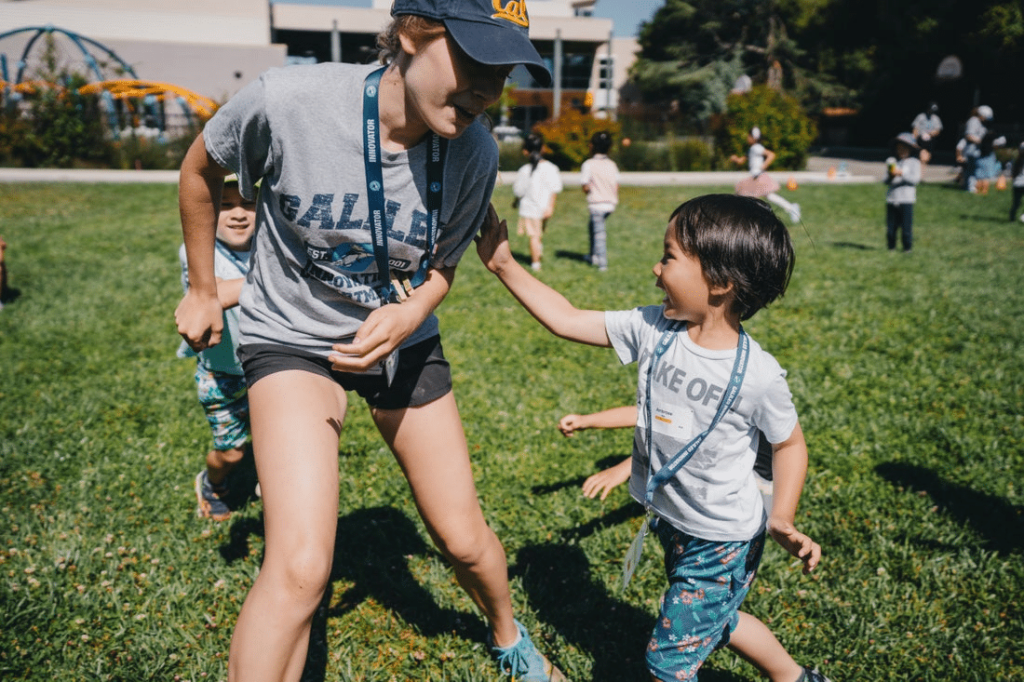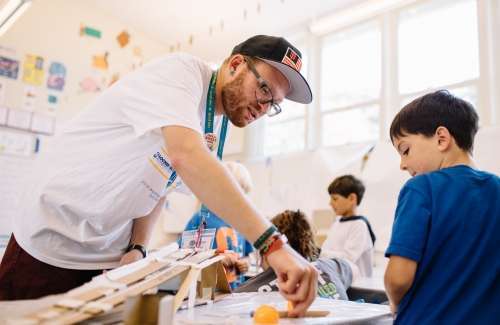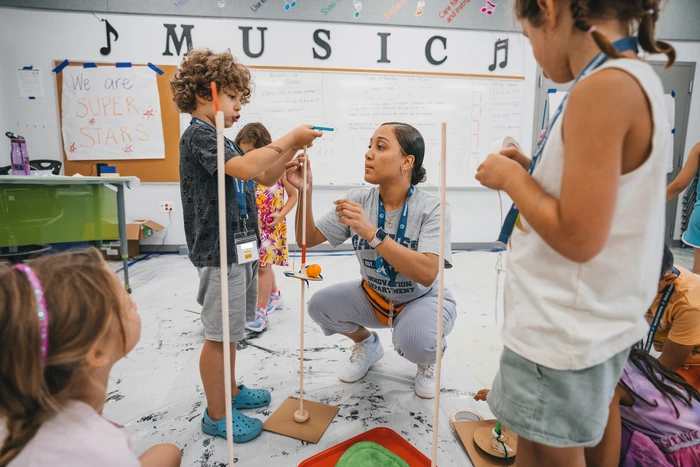From Malala Yousafzai to Mahatma Ghandi, Marvin Gaye to Dolores Huerta to Dr. Martin Luther King, Jr., we take time to teach our children about these visionary leaders who changed the world.
Whether they ultimately set their sights on the world stage or choose to influence a smaller sphere, we all want our children to grow up as adults with the agency and creative confidence to turn their visions into reality. But how do we impart this critical skill?
At Galileo Camps, being visionary is one of five mindset elements at the core of the Galileo Innovation Approach—the backbone of our programs. We use the following three I-statements to help children understand and activate their visionary powers:
BE VISIONARY
- I envision a better world.
- I imagine things that do not yet exist.
- I believe that it is my place to turn vision into reality.
At home, one way to focus on the meaning and importance of being visionary is by sharing stories that highlight these sensibilities, your own or those from books, and then discussing how similar themes come up in your child’s world. These are some of our favorite “Be Visionary” books.
Chalk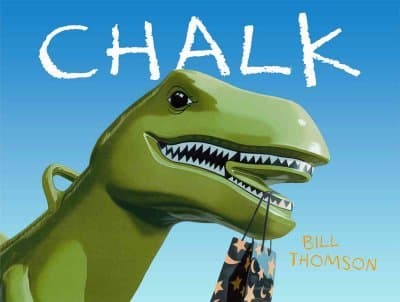 , by Bill Thomson
, by Bill Thomson
In this beautifully illustrated wordless picture book, three children find a bag of magical sidewalk chalk in a playground on a rainy day. When they start drawing on the blacktop, their visions come to life. They first summon the sun, then a kaleidoscope of butterflies—but things take a turn when one child draws a dinosaur. Luckily, with creativity and imagination, they envision a way to save the day. You can catch a read-aloud here.
Christina Katerina & the Box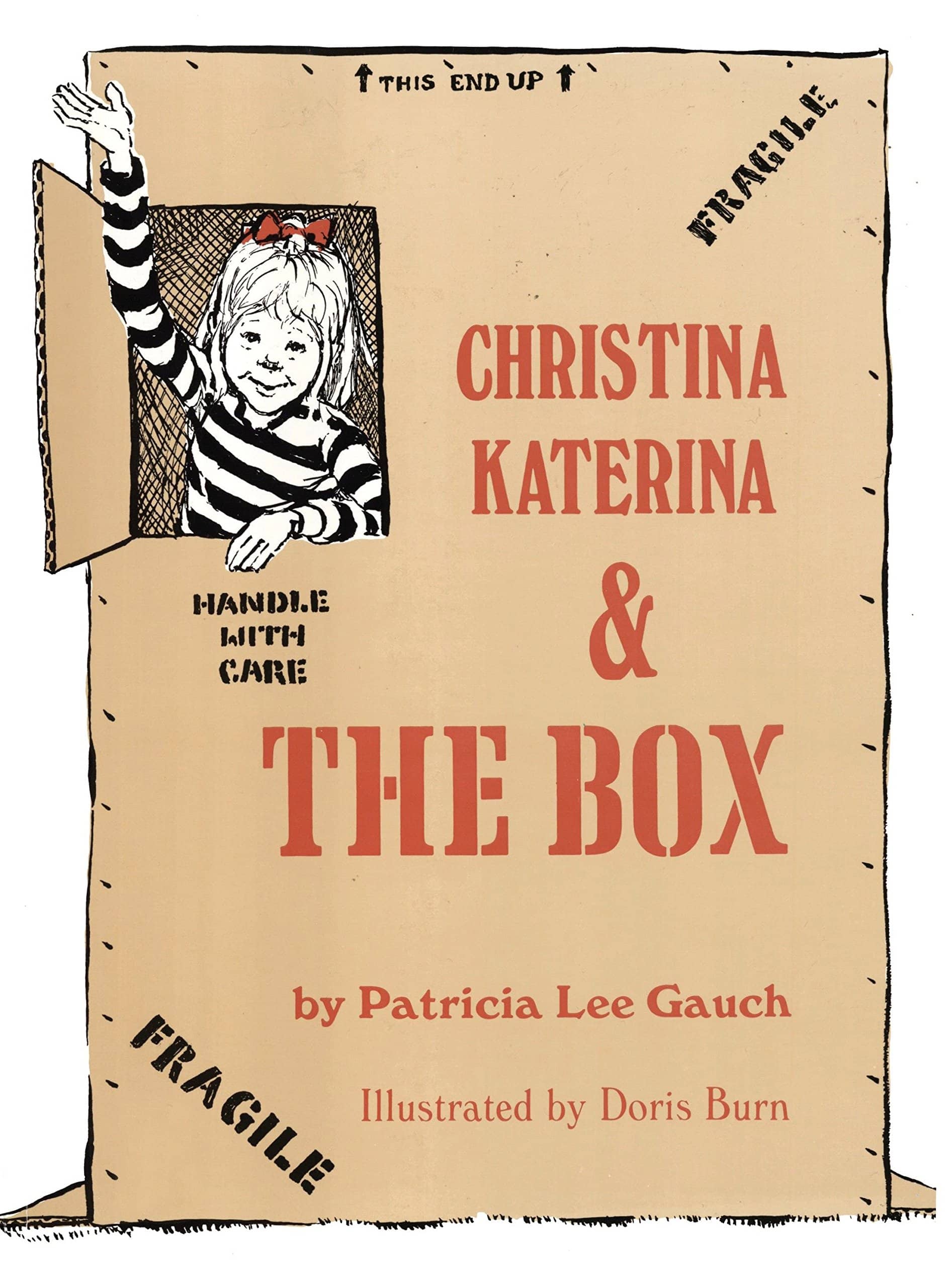 , by Patricia Lee Gauch
, by Patricia Lee Gauch
When a new refrigerator arrives, Christina and her mother are both thrilled—but for very different reasons. After the appliance goes inside, Christina crafts its box into a backyard castle to house her bears and her imagination. In the series of comical events that follow, the castle is transformed into a clubhouse, then a race car and then the floor of a summer mansion until it seems that mom will get her nice neat yard back. With charming old-school illustrations, the book’s focus is grounded where it should be: on children’s out-of-the-box capacity to dream. You can catch a read-aloud here.
What Do You Do with an Idea? , by Kobi Yamada
, by Kobi Yamada
It’s no accident that this book features an egg as a metaphor for a world-changing idea. As a small child goes through the phases of gestating a bold idea—surprise, fear, persistence and, ultimately, impact—readers watch the child’s world transform. With whimsical illustrations that help manifest the emotion of the child’s brainstorm, we are able to connect the abstract notion of an idea to the visceral feelings that accompany a bold vision. This best-selling book provides families with an important reminder about what it means to be visionary. You can catch a read-aloud here.
On a Beam of Light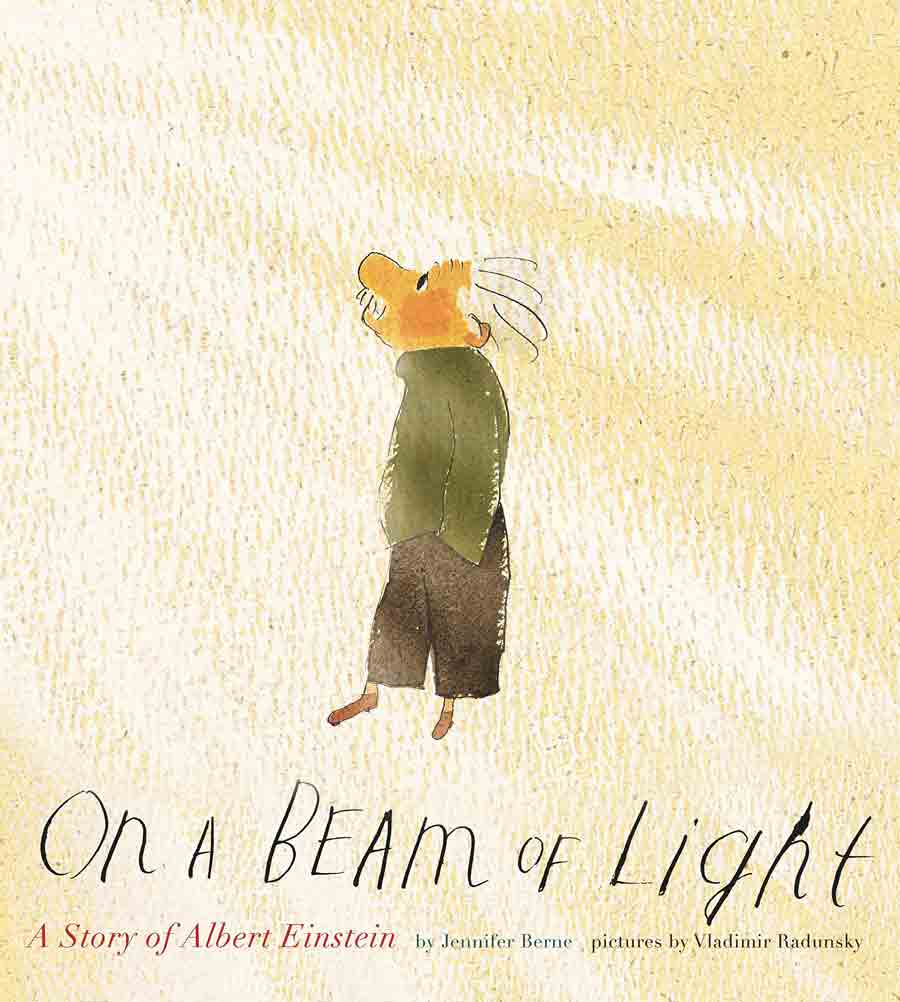 , by Jennifer Berne
, by Jennifer Berne
This delightful book invites readers to travel on a biographical journey with Albert Einstein that encompasses his visionary scientific discoveries and more. With down-to-earth details such as how Einstein hardly spoke until after the age of three or that he wore shoes without socks to make his feet happier while thinking, we see how Einstein’s life was propelled by the power of questions. Each new idea Albert encounters provides the gravitational pull to discover the next one, ultimately honing his capacity to see the universe in ways only a handful of others ever have. Even if you think you’re familiar with Einstein’s life, “On a Beam” portrays his epic curiosity in a whole new light. You can catch a read-aloud here.
The Boy Who Harnessed the Wind , by William Kamkwamba and Bryan Mealer
, by William Kamkwamba and Bryan Mealer
There is an undeniable theme in the lives of visionaries: early on, they’re often considered completely nuts. Set in Malawi against a famine-inducing drought, this gorgeously-illustrated lyrical book tells the true story of 14-year-old William Kamkwamba who dreams of building a windmill to bring electricity and running water to his village. William’s neighbors call him misala—crazy—as he works tirelessly on his windmill with nothing but books and junkyard scraps. In a celebration of vision over derision, Kamkwamba’s life-changing achievement inspires the visionary in all of us—what might your family harness to change your world? You can catch a read-aloud here.
—
Written by Pamela Briskman, Galileo’s Vice President of Education. Pamela has worked in education for more than 25 years and leads the extraordinary team of educators, makers and engineers who create Galileo’s curriculum and the rich design projects you’ll find at camp.

